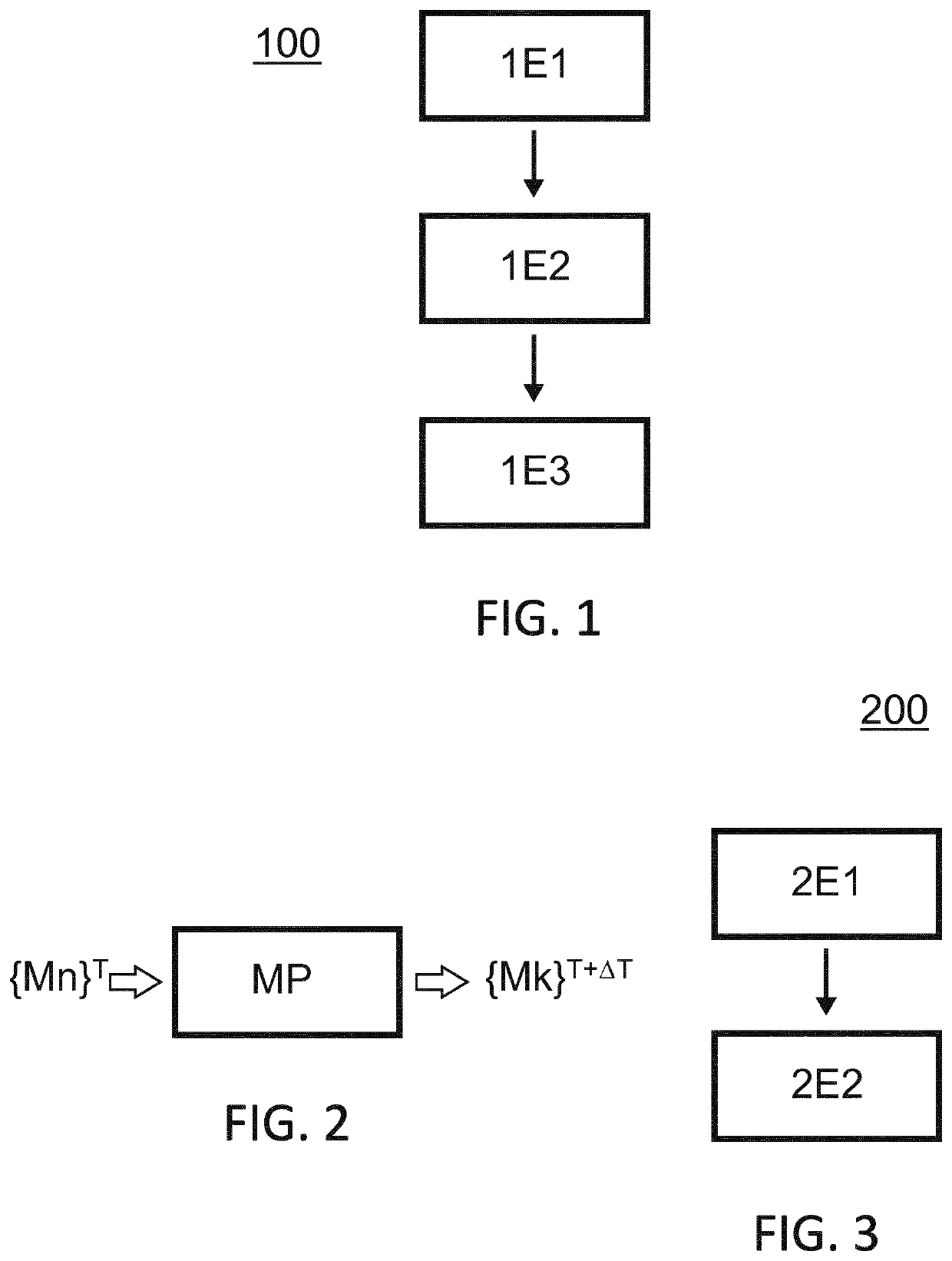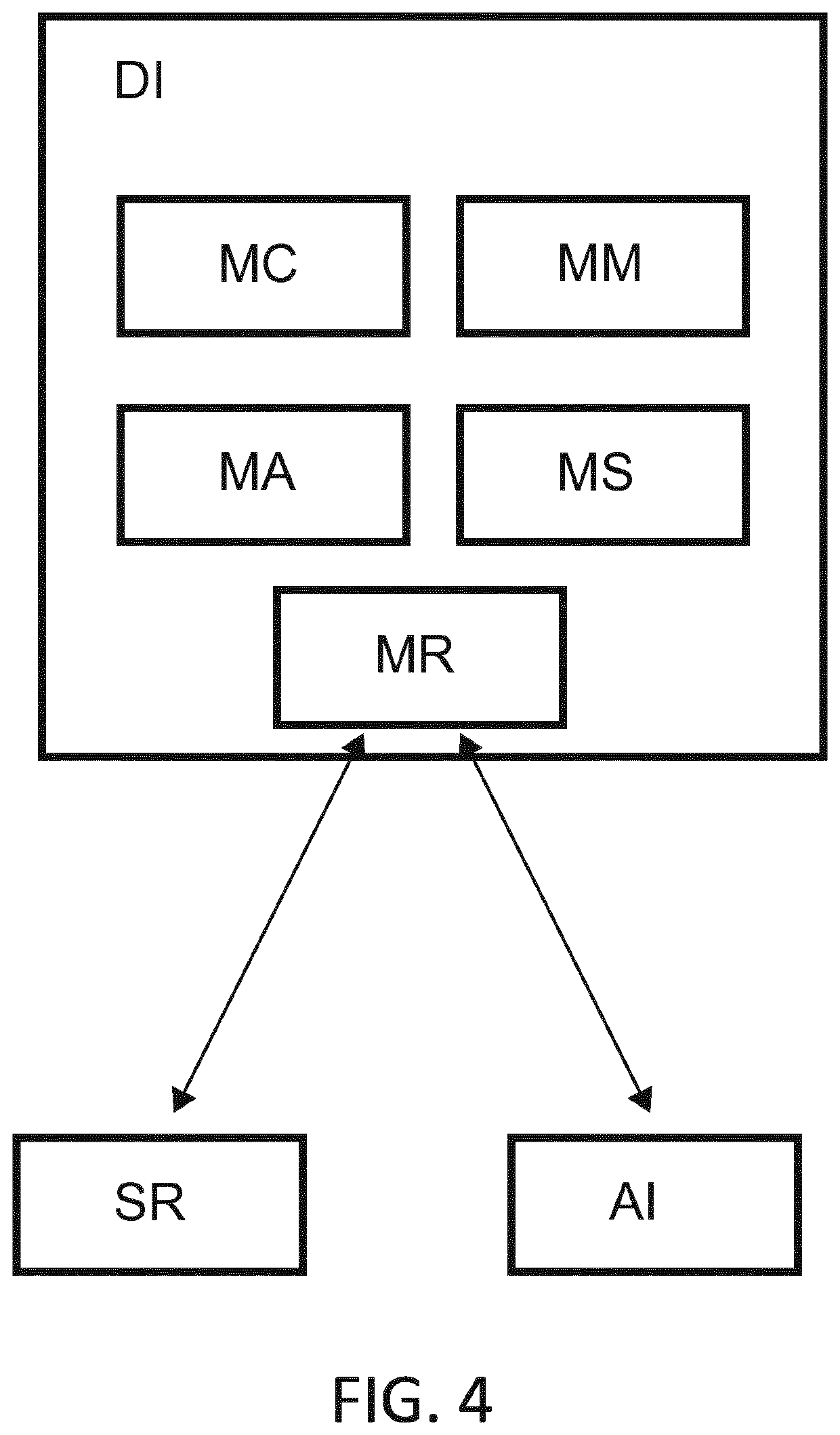Method for determining a prediction model, method for predicting the evolution of a k-uplet of mk markers and associated device
a prediction model and model technology, applied in the field of central nervous system disorders, can solve the problems of insufficient prognostic markers, tedious manual reading of cerebral and spinal cord lesions as it is done today, and insufficient prognostic markers on its own
- Summary
- Abstract
- Description
- Claims
- Application Information
AI Technical Summary
Benefits of technology
Problems solved by technology
Method used
Image
Examples
Embodiment Construction
[0081]Unless otherwise specified, a same element appearing in different figures has a unique reference.
Possible Markers
[0082]A marker may be selected from a brain imaging marker (especially an anatomical imaging marker or a functional imaging marker), a subject cognitive score, a subject motor score, a subject autonomy score and a subject mood score.
[0083]A brain imaging marker may comprise an imaging marker indicative of the volumetry of at least one part of the brain or spinal cord (corresponding to an anatomical imaging marker), which may be derived from a nuclear magnetic resonance (MRI) image of at least one part of the brain or spinal cord. These markers may especially relate to the volumetry of a part of the subject's brain selected from hippocampal volume, whole brain volume, cerebellum volume, volume of subcortical structures, cortical thickness and / or opening of cortical-cerebral sulci. The brain imaging marker may also include a marker relating to lesion load, such as the...
PUM
 Login to view more
Login to view more Abstract
Description
Claims
Application Information
 Login to view more
Login to view more - R&D Engineer
- R&D Manager
- IP Professional
- Industry Leading Data Capabilities
- Powerful AI technology
- Patent DNA Extraction
Browse by: Latest US Patents, China's latest patents, Technical Efficacy Thesaurus, Application Domain, Technology Topic.
© 2024 PatSnap. All rights reserved.Legal|Privacy policy|Modern Slavery Act Transparency Statement|Sitemap


